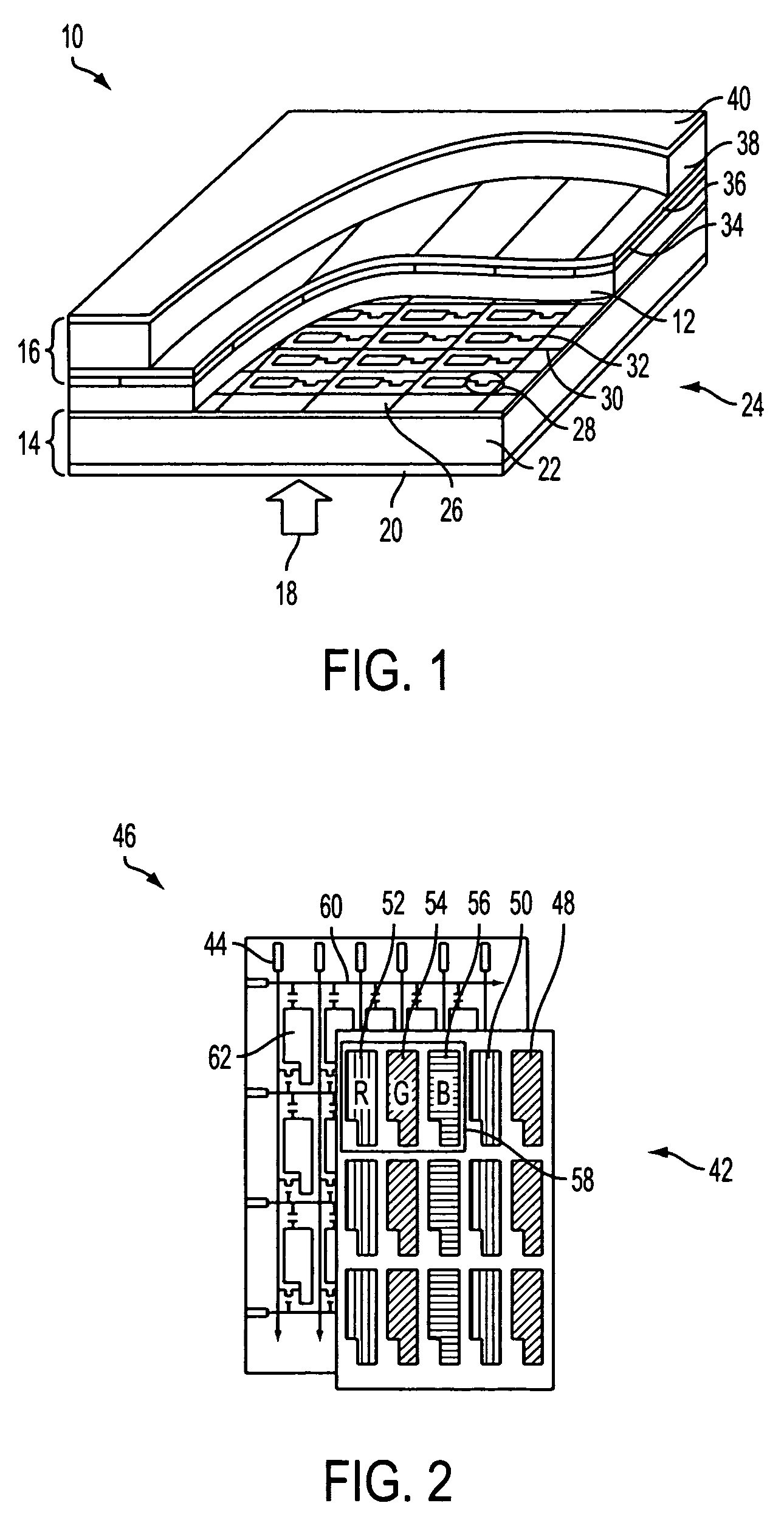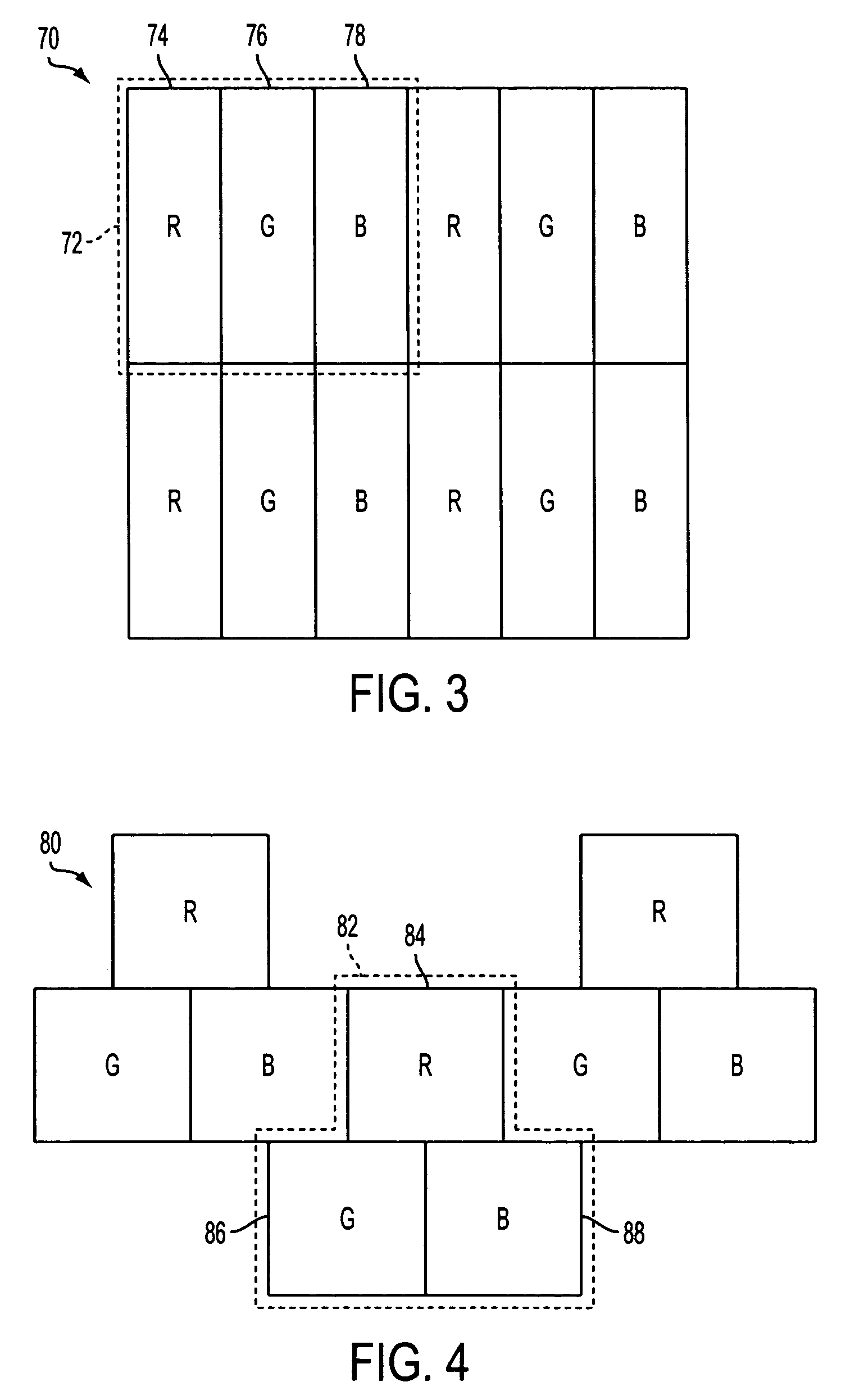Methods of printing filter material to fabricate color filter
a filter material and printing filter technology, applied in the direction of coatings, optical elements, instruments, etc., can solve the problems of limited application of electrodeposition coating technique, difficult subsequent coloring process, and relatively complex pigment-related methods
- Summary
- Abstract
- Description
- Claims
- Application Information
AI Technical Summary
Problems solved by technology
Method used
Image
Examples
Embodiment Construction
[0027]In general, drop size switching (DSS) techniques associated with inkjet printing have not been used previously to print filter material (e.g., red, green, and / or blue filter material) on a substrate in fabricating a color filter for a display device. A method for use of inkjet print heads (e.g., piezo, acoustic, thermal, etc.) with a DSS printing process reduces fabrication costs and improves the uniformity characteristics in printing filter material in fabrication of color filters for various types of display devices (e.g., liquid crystal displays (LCDs), light emitting diodes (LEDs), plasma display panel (PDP) devices, etc.). Use of the DSS printing process also reduces the fabrication time for a color filter, particularly where DSS printing replaces lithographic printing or photolithographic processes.
[0028]For example, piezo (e.g., piezoelectric, piezoceramic, etc.) print heads can operate in several droplet modes, depending on the character of the voltage waveform applied...
PUM
| Property | Measurement | Unit |
|---|---|---|
| particle size | aaaaa | aaaaa |
| diameter | aaaaa | aaaaa |
| diameter | aaaaa | aaaaa |
Abstract
Description
Claims
Application Information
 Login to View More
Login to View More - R&D
- Intellectual Property
- Life Sciences
- Materials
- Tech Scout
- Unparalleled Data Quality
- Higher Quality Content
- 60% Fewer Hallucinations
Browse by: Latest US Patents, China's latest patents, Technical Efficacy Thesaurus, Application Domain, Technology Topic, Popular Technical Reports.
© 2025 PatSnap. All rights reserved.Legal|Privacy policy|Modern Slavery Act Transparency Statement|Sitemap|About US| Contact US: help@patsnap.com



